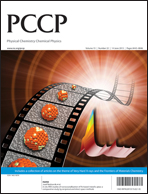How to interpret current–voltage relationships of blocking grain boundaries in oxygen ionic conductors
Abstract
A new model based on a linear diffusion equation is proposed to explain the current–voltage characteristics of blocking grain boundaries in Y-doped CeO2 in particular. One can also expect that the model can be applicable to the ionic conductors with blocking grain boundaries, in general. The model considers an infinitely long chain of identical grains separated by grain boundaries, which are treated as regions in which depletion layers of mobile ions are formed due to trapping of immobile charges that do not depend on the applied voltage as well as temperature. The model assumes that (1) the grain boundaries do not represent physical blocking layers, which implies that if there is a second phase at the grain boundaries, then it is too thin to impede ion diffusion and (2) the ions follow Boltzmann distribution throughout the materials. Despite its simplicity, the model successfully reproduces the “power law”: current proportional to voltage power n and illustrated with the experimental example of Y-doped ceria. The model also correctly predicts that the product nT, where T is the temperature in K, is constant and is proportional to the grain boundary potential as long as the charge at the grain boundaries remains trapped. The latter allows its direct determination from the current–voltage characteristics and promises considerable simplification in the analysis of the electrical characteristics of the grain boundaries with respect to the models currently in use.


 Please wait while we load your content...
Please wait while we load your content...